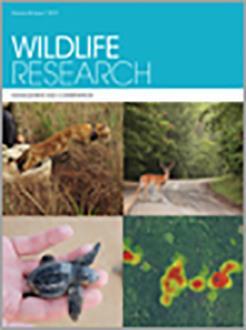Context.Pseudogymnoascus destructans is the fungus responsible for white-nose syndrome (WNS), which has killed millions of hibernating bats in North America, but also occurs in bats in Europe and China without causing large-scale population effects. This is likely to be due to differences in species susceptibility and behaviour, and environmental factors, such as temperature and humidity. Pseudogymnoascus destructans is currently believed to be absent from Australia.
Aims. To ascertain the level of risk that white-nose syndrome poses for Australian bats.
Methods. This risk analysis examines the likelihood that P. destructans enters Australia, the likelihood of the fungus coming in contact with native bats on successful entry, and the potential consequences should this occur.
Key results. This risk assessment concluded that it is very likely to almost certain that P. destructans will enter Australia, and it is likely that bats will be exposed to the fungus over the next 10 years. Eight cave-dwelling bat species from southern Australia are the ones most likely to be affected.
Conclusions. The risk was assessed as medium for the critically endangered southern bent-winged bat (Miniopterus orianae bassanii), because any increase in mortality could affect its long-term survival. The risk to other species was deemed to range from low to very low, owing to their wider distribution, which extends beyond the P. destructans risk zone.
Implications. Although Australia’s milder climate may preclude the large mortality events seen in North America, the fungus could still significantly affect Australian bat populations, particularly bent-winged bats. Active surveillance is required to confirm Australia’s continuing WNS-free status, and to detect the presence of P. destructans should it enter the country. Although White-nose Syndrome Response Guidelines have been developed by Wildlife Health Australia to assist response agencies in the event of an incursion of WNS into bats in Australia, these guidelines would be strengthened by further research to characterise Australian cave temperatures and hibernating bat biology, such as length of torpor bouts and movement over winter. Risk-mitigation strategies should focus on education programs that target cavers, show-cave managers and tourists, particularly those who have visited regions where WNS is known to occur.






